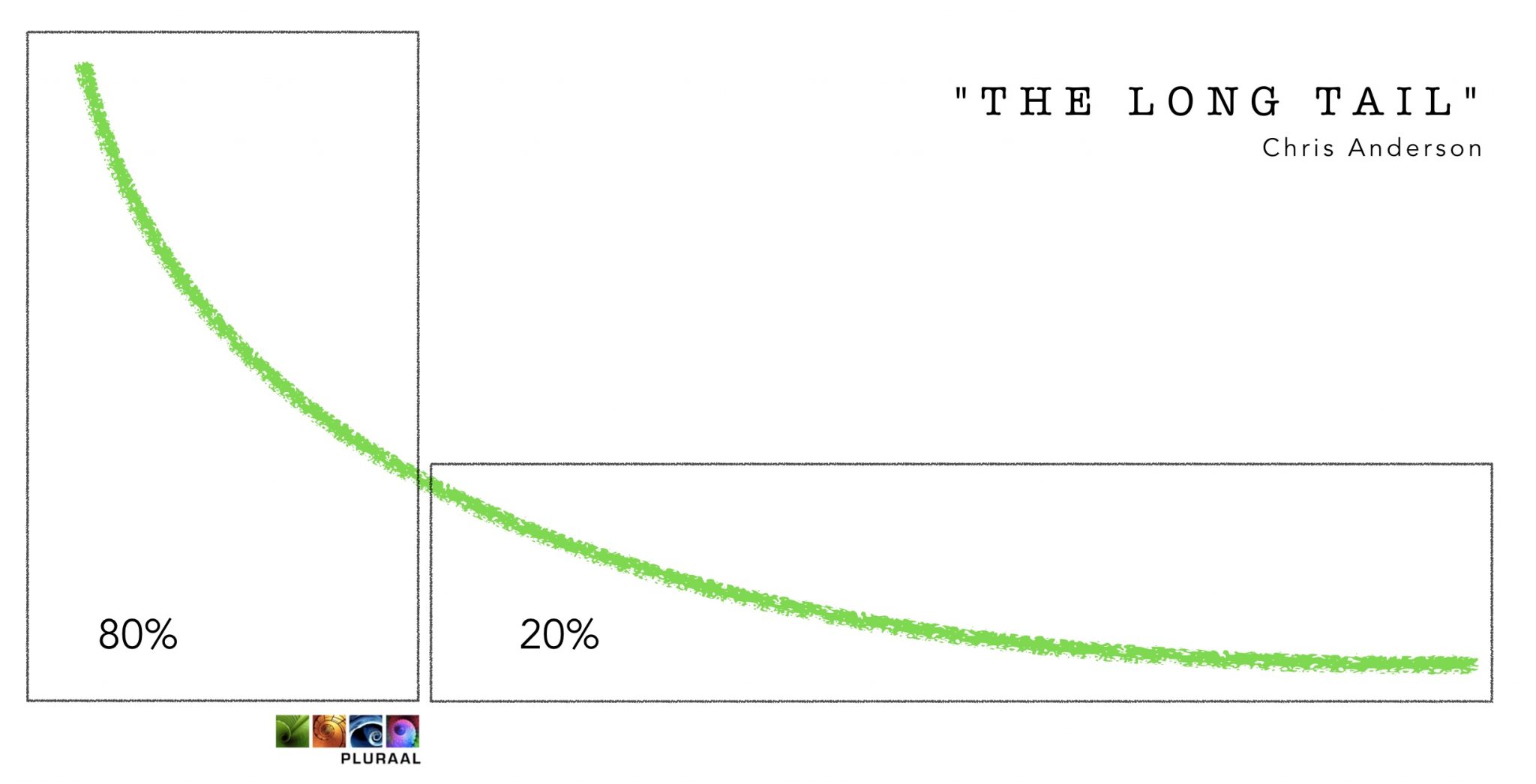The digital city, where everything is connected to the internet, makes thinking in the long tail possible: tailored solutions for people who don’t fit in mainstream solutions.
Chris Anderson came up with this name as a philosophy for this age of internet: the long tail. He first mentioned it in an article in 2004 and later in a book: “The Long Tail: Why the Future of Business is Selling Less of More” (2006).
You see, this is the first time in history that we not only can reach the masses (about 80% of the customers, but also the remaining 20%, the innovators and early adaptors. Because of the internet, they now have a possibility to see their uncommon wishes fulfilled.
Until now, we have been trained to think like in the Industrial Age, where we would only have the means to serve the mainstream 80% with help of mass production and mass communication. But then we would pass on the 20% of the consumers who wish to have more choice from their desires and motivations.
Current technology makes it possible to involve these innovators and adaptors. Think of a smart phone as an example: it’s quite standard, but by way of the apps you download, you make it into a customized device, set to your own preferences. The Long Tail philosophy has been in use in the music- ad movie industry for years now. But also examples like AirBnB and Uber use this way of thinking and completely focus on the 20% Long Tail-customers.
I also see a number of ways to use the Long Tail philosophy in house electronics. For instance, you can project a thermostat that changes the temperature analogue (with a rotary knob) on a digital screen, for those who want things simple or are not yet familiar with the endless possibilities. Behind the screen, everything is controlled in detailed, yet the appearance is simple. But you can also serve the latest technology to those who wish.
What I think is the real challenge here, is how these 20% of passionate innovators and early adaptors, will influence ad control how the majority will eventually use the service or product. I think that as company (governmental or business) you should consider how to use the full 100% of the market, and realize that those 20% of people will be more and more important for the use and experience to the majority of the users of your service or product.


Leave a reply